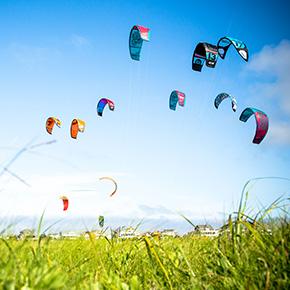Kite Reviews Explained: Key Performance Characteristics
Here at REAL we test everything. We get all the new kites that come to market and then we take sessions. We ride them, crash them, boost them, teach on them, unhook them, ride them in the surf and try to figure out what works and doesn’t work in every kite design. We created the REAL Key Performance Characteristics as a baseline to compare all products.
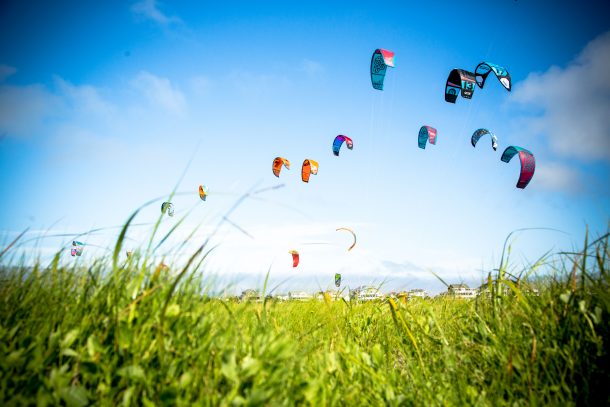
Responsiveness
Responsiveness tells you how quickly a kite reacts when you provide input to the bar. More responsive kites are designed for wave riding, kite loops, and advanced riders. Less responsive kites are better suited for beginners who need more time to think about what their kite is doing and wakestyle riders who want their kite slow for unhooked tricks. Most kites have different wing tip attachments to provide more or less responsiveness depending on your skill level and the feel you are looking for.
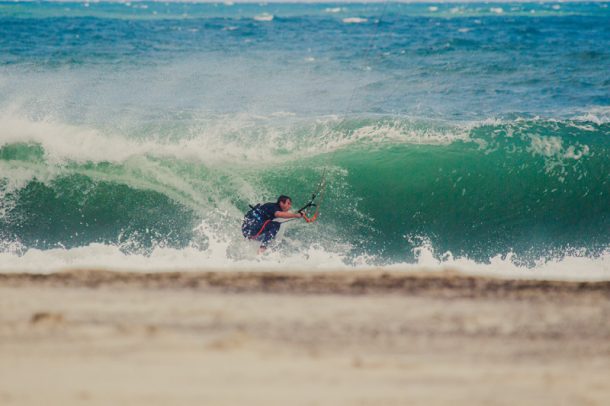
Turn Radius
Kites turn on a narrow, or wide radius depending on their wing tip shape and canopy design. Kites with a narrow turn radius make a pivotal turn close to the center axis of the kite, and they do not take much space to turn. These kites generate less power in turns and maximum power while they are flying in a straight line through the window. Most kites with a narrow turn radius feature a curved or pinched in wing tip shape. These kites are easy to generate and lose power by simply sheeting in or out.
Kites with a wide turn radius will turn off of the outer wing tip. They have much more power through the turn. These kites feature a wide wing tip and often have a C like canopy shape to expose more canopy material to the wind throughout the the turn. Wide radius kites generate a lot of power through the turns and need to be flown more aggressively.
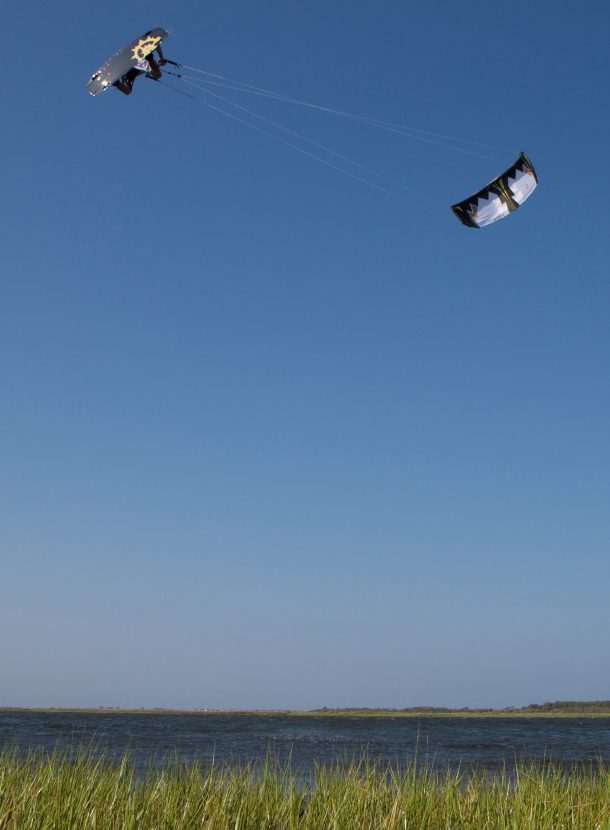
Window Position
If a kite sits deep in the wind window, it will have more down wind pull and is better for heavier kiters and wake style tricks. This type of kite is also going to be more stable over head since it is farther back in the wind window, and it will be less likely to overfly you. When a kite rides farther forward in the wind window, then it will be more efficient upwind, jump higher, and it has the potential to be less stable overhead. Generally speaking a fatter or lower aspect kite will sit deeper in the wind window and a skinny or higher aspect kite will fly more forward in the wind window.
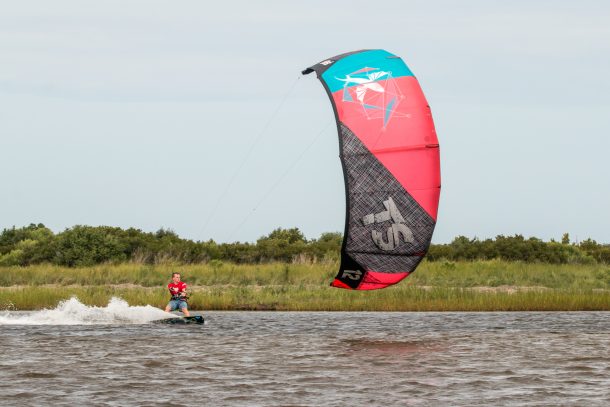
Wind Range
Some kites have reduced wind range and are designed to have a precise size kite for the specific conditions. Others are designed for massive wind range and have a big sweet spot. Kites with a narrow wind range are often more specialized and will offer rewards for flying the perfect size. Kites with a large wind range take the guess work out of picking your size but often do not perform as well in specific disciplines of kiteboarding.
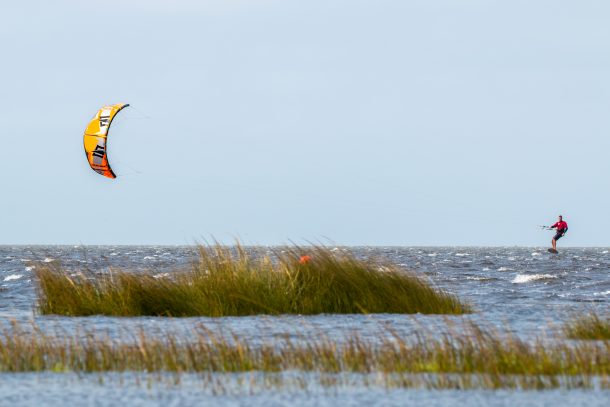
Relaunch
The relaunch is a definition of how easily a kite comes off the water. Anything that might be different or unique about the water relaunch characteristics will be defined in this section.
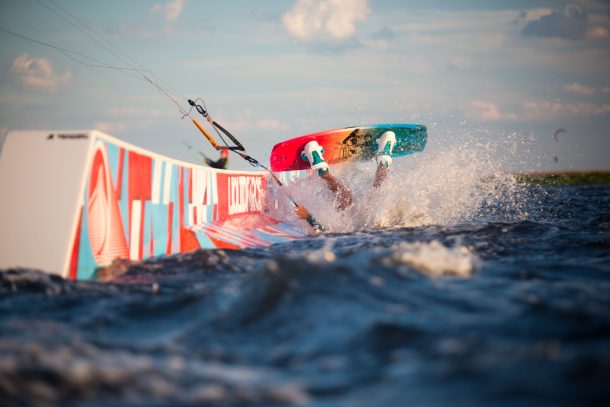
Bar Pressure
This is a definition of how heavy the bar feels in your hands when you fly it. It will tell you of how much you feel the kite or don’t. A kite with high bar pressure is going to be easier to fly since you feel the pull of the kite in your hands. It can also fatigue you faster. Lighter bar pressure kites take less effort to initiate the turn of the kite, and the pull of the kite is translated into your harness hook rather than your hands. Bar pressure is determined by how much power is transmitted through the steering lines. When a kite has more pull on the steering (outer) lines you will feel it in your hands. Kites that pull more from the flying (center) lines apply pressure to the hook and pull more from your core.
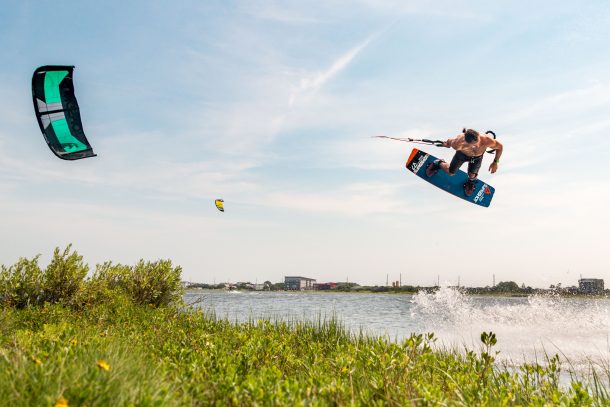
Power Per Size
Kites of the same size can vary in the amount of power that they have so a 12m of one model kite might have a lot more power than a 12m of another model of kite. The power or “Windrange” of a kite is determined by its design. Most beginners can expect to get 5mph of average wind range per kite size. For example: a 170lb kiter can expect to ride a 12 meter kite in 17-22mph average wind speed. As kiters advance you can expect to gain ~2mph on the low end when you learn to move the kite more efficiently and ~2mph on the top end when you can properly edge a powered kite.
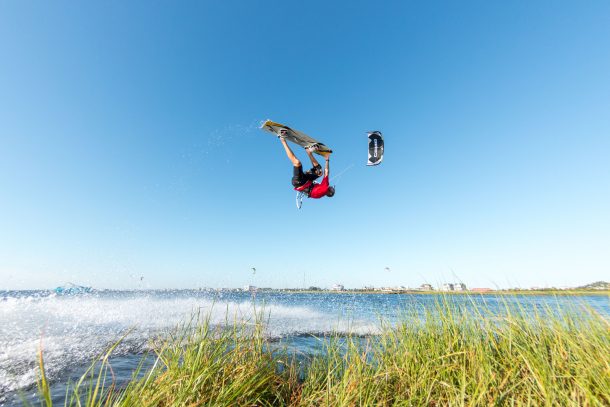
Have more questions? Don’t hesitate to call, email, or chat with a REAL Pro (252) 987-6000 or REALpro@REALwatersports.com

